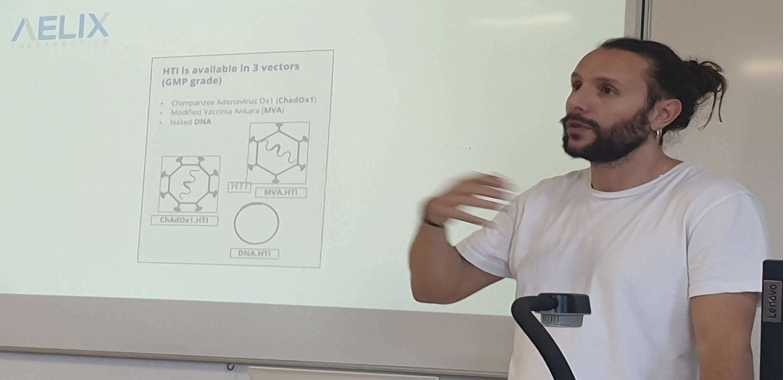A scientist visits the DNL Biology class

Category
InfosThe 11th of April a DNL Biology class had the visit of a vaccine searcher, Álvaro Aranguren Ibañez that came to present in one hour, the history of vaccination and his work on a cancer vaccine. He presented himself and explained to us in brief lines the process of studies and schools that he went through; as the years went he got interested in numerous files and began to explore a wide range of possible future paths before settling on one; his current job, searcher in a lab specialised in cancer vaccines. He took care to develop what it was about, and asked us some questions.
Alvaró then proceeded to get into details and talked about the history of vaccination. He described us the calamities the occidental world was facing before the apparition of vaccination, calamities such as smallpox, a deadly illness already old of 5500 years at that time that killed 10% of the population during the 20th century. At those times the vaccine against smallpox consisted of giving the patient a small amount of the illness, by blood or contact.
Focusing on smallpox, he presented to us two major figures of the vaccination history of the oriental world: Mary Wortley Montagu (1689-1762) and Edward Jenner (1749-1823). Dr Jenner is nowadays officially recognized as the creator of the first successful vaccine in the world (even if the idea of vaccine came originally from the Ottoman Empire and Mrs Montagu, and Dr Jenner got largely inspired by it). That’s thanks to Dr Jenner that the modern occidental society is now totally free of the smallpox! And, if you didn’t know, America as well.
Very interesting, a Spanish healthcare mission, commonly referred to as the Balmis Expedition, took place in 1803 to assure the access of the vaccine inside of the Spanish colonies present in America. But the problem was how to transport the vaccine fluid…The expedition carried 22 young orphans, all under 10, that were about to become real vaccine mules throughout the expedition. As the months went by, the doctors on the ship started to inoculate them a small amount of cow smallpox, one after the other. That manoeuvre allowed the illness to stay on board, so that as the ship arrived in America, the smallpox was extremely easy to spread. And with the noble and totally unwilling sacrifice of their health, those children became in fact some kind of saviours! To tell the truth, the expedition itself was officially referred to as the Royal Philanthropic Vaccine Expedition.
Camille BUFFARD


